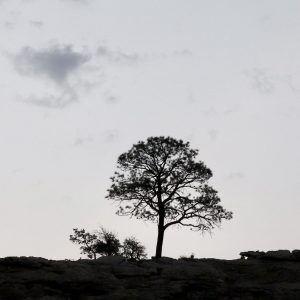Only the jumping chollas are out to get you.
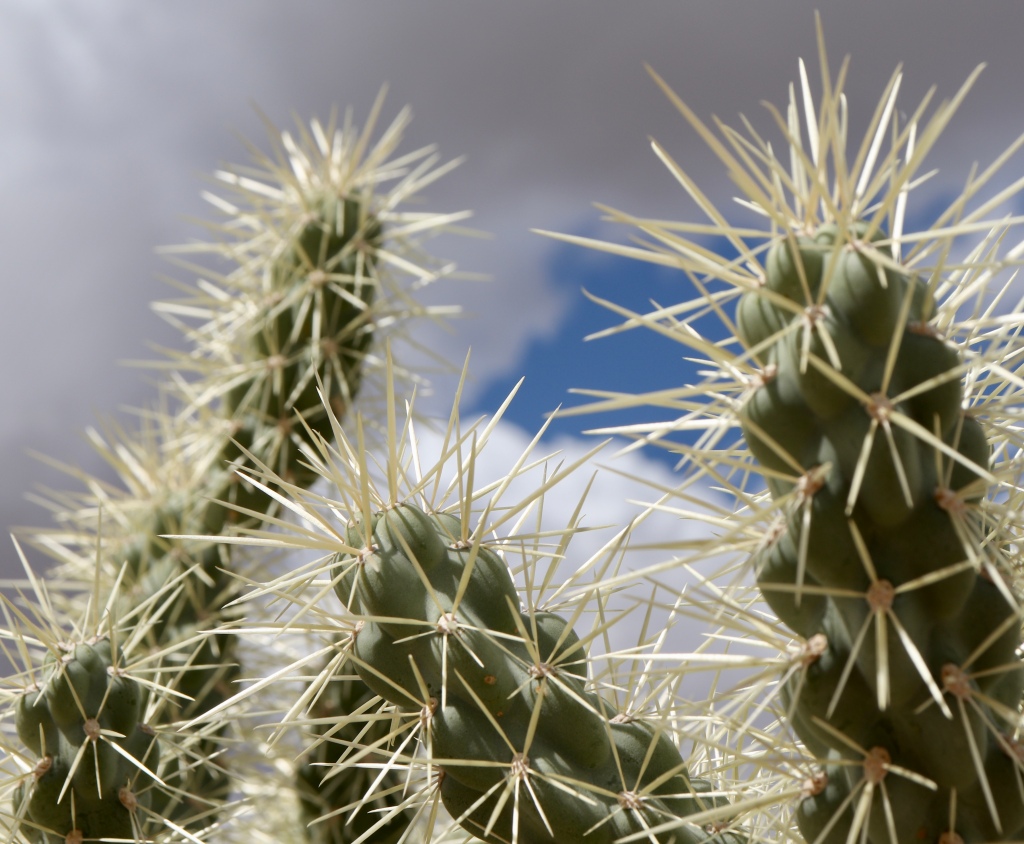
Everything else just wants to be left alone.
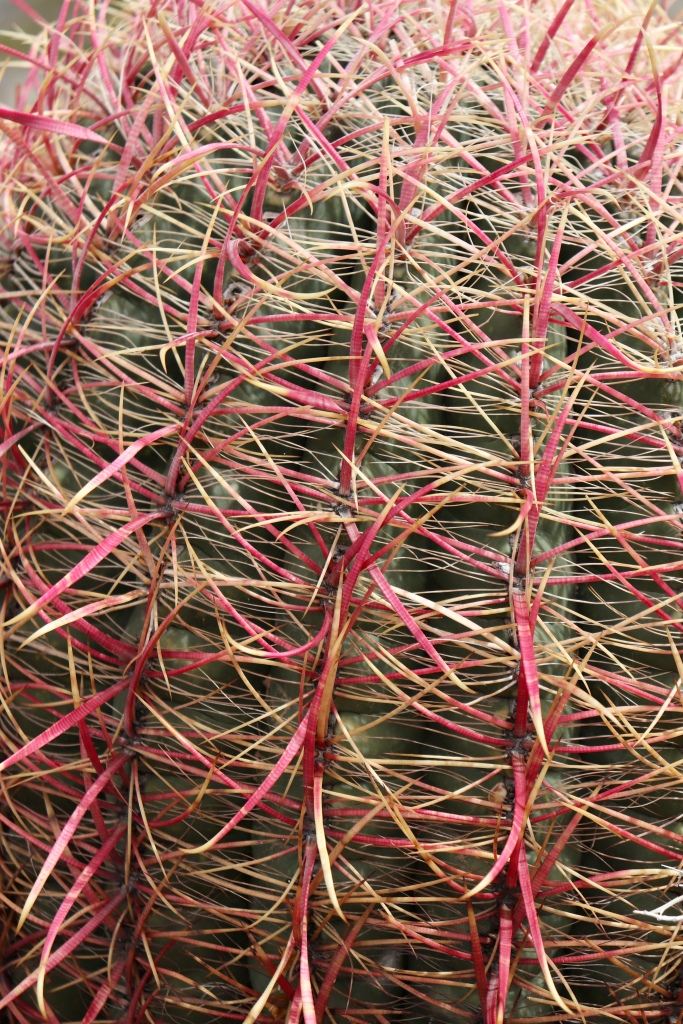
The jumping chollas want to use you first, and then be left alone. Their prickles will grab hold at the slightest touch and stick to socks, trousers, skin, fur, hide. They will cling so tightly that a stem segment breaks off from the parent cactus. Once you have freed yourself, with much cursing and yelling (pliers help, too), and hurled the stem away, it will root where it fell. It will water itself with its own flesh until the original segment shrivels.

Amputation can’t be an easy way to reproduce, but there you are. Desert plants can’t afford half-hearted action. Having walked through fields of dead, dried, one-inch tall cholla seedlings, which sprouted the normal way via flowers, birds, and bees but didn’t outlast their first dry season, I see the chollas’ point(s).

You get used to desert plants being hurtful. People who crave the soft greenery of rainy climates are often uncomfortable here. They feel defensive; they weary of having to be on guard, of being injured when they meant no harm.
For all we know, desert plants experience you the same way. As the tongue-twister says, “A skunk sat on a stump. The stump thought the skunk stunk. The skunk thought the stump stunk.” It never hurts to remember that your perspective is a narrow one, and not necessarily the best because it’s yours.
The desert’s prickly and thorny plants have this edge on humans:

They never set out to do harm. (Except for the jumping chollas. Obviously.) Their weapons are purely defensive. And what do they use them on? Not insects, bats, small rodents, birds, and the like. No. They use them against those who would mine their flesh for its life-giving waters. In other words, beings like you.

You, my friend, are a pestilential threat. (It’s okay. ❤️ So am I.)
The problem is that desert plants interpret any contact as attack; they cannot discern peaceful intentions. Their defenses are structural, not voluntary, developed in infancy and maintained day and night their whole lives. They are hyper-vigilant even in death.

The scarcity of a resource determines the intensity of defense. Harsh situations call for harsh measures, a ruthless prioritizing of energy. Going leafless altogether; blooming a handful of days a year or once a century; reproducing by amputation—those are all pretty harsh. (Are they any more extreme than a “normal” tree that loses leaves and goes dormant for six months a year?)
If you hang out with positive, cheerful, chirpy people, you have probably encountered the “abundance vs. scarcity” mentality: the idea that whether you have one or the other is a matter of perspective. Yes, our sense of enoughness can hinge on our attitude, especially when our needs are, in fact, met—when we take food, water, and shelter so deeply for granted that we forget they are there. We can sometimes point to people in dire circumstances who contrive through superheroic resourcefulness to meet their own and their communities’ needs.
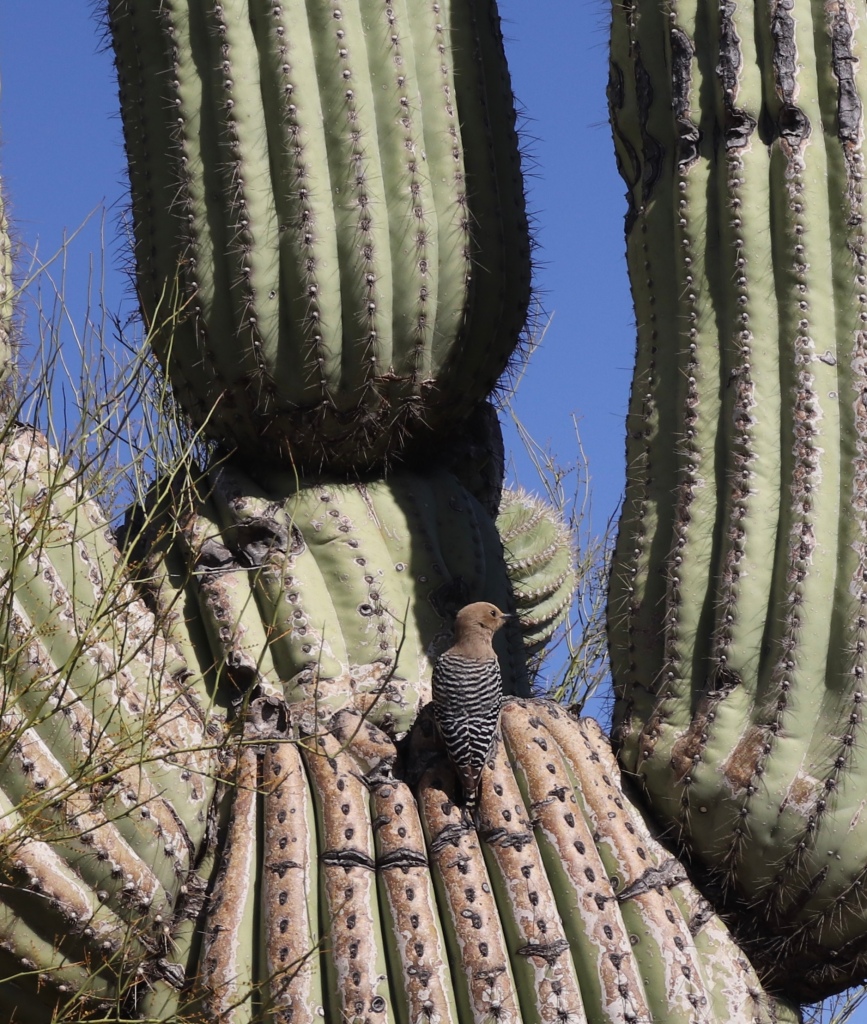
I’m a cheerful, chirpy person, by and large. But I’m also reasonably perceptive. To my eyes, dearth is sometimes a reality, and superheros are exceptions. If seeing your fellow humans living with unmet basic needs—whether that means food or the time or strength to prepare it—isn’t enough to show you the shape of scarcity, you might try spending a few months in the desert.
Sure, plants thrive here, in exciting, resourceful, vigorous ways. In this water-poor economy, they have abundance—as long as they sacrifice something else. As long as they are willing to lose a lot of their plant-hood in the process.

In our personal economies, the three finite resources are time, money, and energy. Sometimes we just don’t have enough of these resources, whether because of workplaces that abuse our time, shrinking wages, mental or physical illness, or other circumstances largely beyond our control. In seasons of dearth, all our creative work-arounds can’t make up the deficit.
How do you avoid growing prickles to defend what is left? (Should you even try?) In your resourcefulness, how much normality can you sacrifice before you become twisted, grotesque? Before you lose some of your humanity?
I don’t know. I certainly haven’t managed it. Only a saint could deny that first instinct. (Saint: Another word for superhero.)
One thing I am learning, though, is that if someone turns prickly on you, it’s worth asking what scarce internal resource they’re protecting.
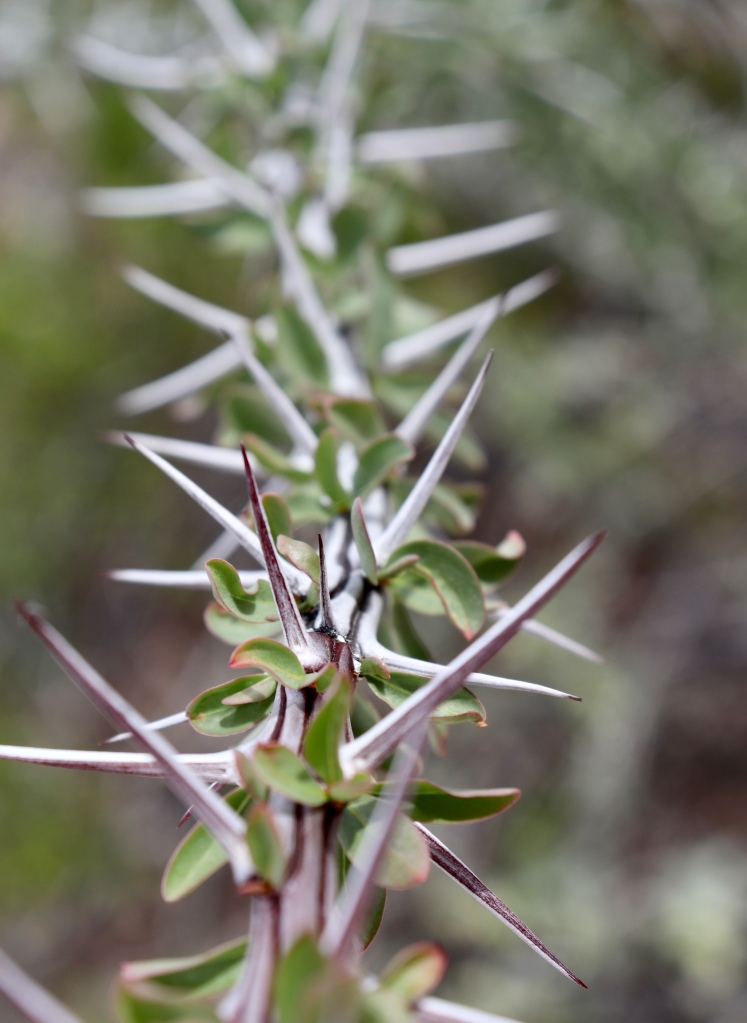
It’s worth asking: are you a pestilential threat?
